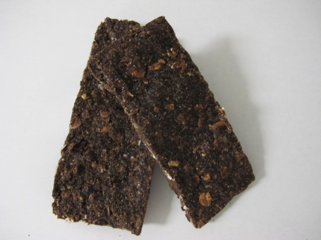Purple Wheat Bioavailability Study
Purple wheat is not only eye catching, but it also provides potential for providing added nutrients and health benefits. It is a highly pigmented grain, providing a source of two phytochemicals, anthocyanin and phenolic acid. Each of these add to the nutrient content seen in whole wheat grains, which is a dietary staple in many lifestyles. A recent research study in the HNRU at the University of Guelph looked at these phytochemicals and whether they are absorbed by the body after consuming purple wheat products. They also looked at the antioxidant and anti-inflammatory effects it provides for the body.
The full article is available free for a limited time directly from Elsevier.
To sum up the study, two purple wheat products, a granola bar and crackers enriched with purple wheat whole grain flour and purple wheat bran, were consumed by healthy adults. After consumption, urine and blood levels were measured to track the phytochemical compound concentrations using standardized tests. Antioxidant and inflammatory markers were also accessed to explore the health benefits after one-time consumption.

After consuming either of the purple wheat products, there were some phenolic acid compounds in the blood, however there were no significant concentrations of anthocyanins found. This could suggest a couple of things. First, anthocyanins are rapidly metabolized and used by the body, so it may not end up in the blood or urine (Gamel et al., 2019). There was also higher ferulic acid concentration, particularly after consuming the purple wheat crackers. Although both purple wheat products have high amounts of phenolic acid, there were higher amounts of ferulic acid in the blood and urine. Therefore, ferulic acid could be an anthocyanin metabolite due to its extensive metabolism and use by the body. This could explain why there was no anthocyanins, but a few phenolic acid compounds found in the blood and urine (Gamel et al. 2019). After purple wheat product consumption, there were more total phenolic acid metabolites found in the blood and urine. In terms of the total antioxidant and anti-inflammatory activity, various markers were slightly elevated, but these changes were not significant when compared to pre-consumption levels (Gamel et al. 2019).
This research suggests that there is evidence to support the health benefits of purple wheat consumption. So, what does this mean for consumers? It should be no surprise that the use of purple wheat will be explored in creating novel food products. Purple wheat not only provides an alternative for whole wheat grains, but also packs an added phytochemical punch.